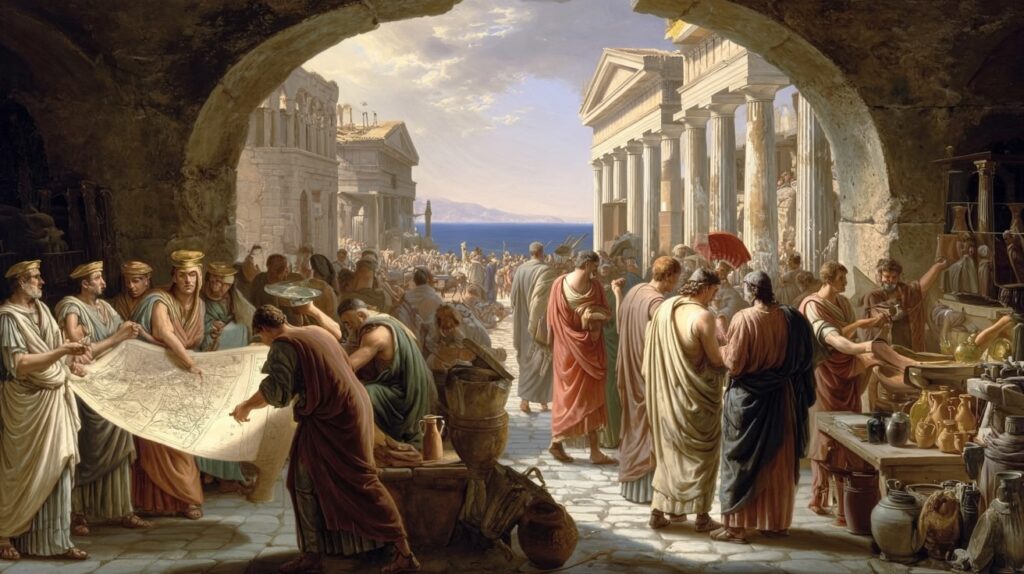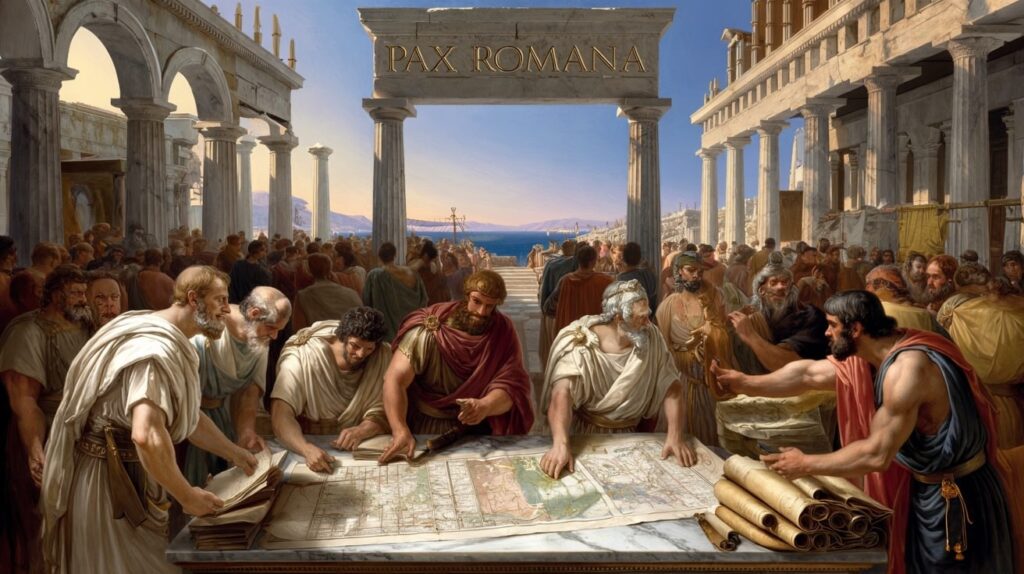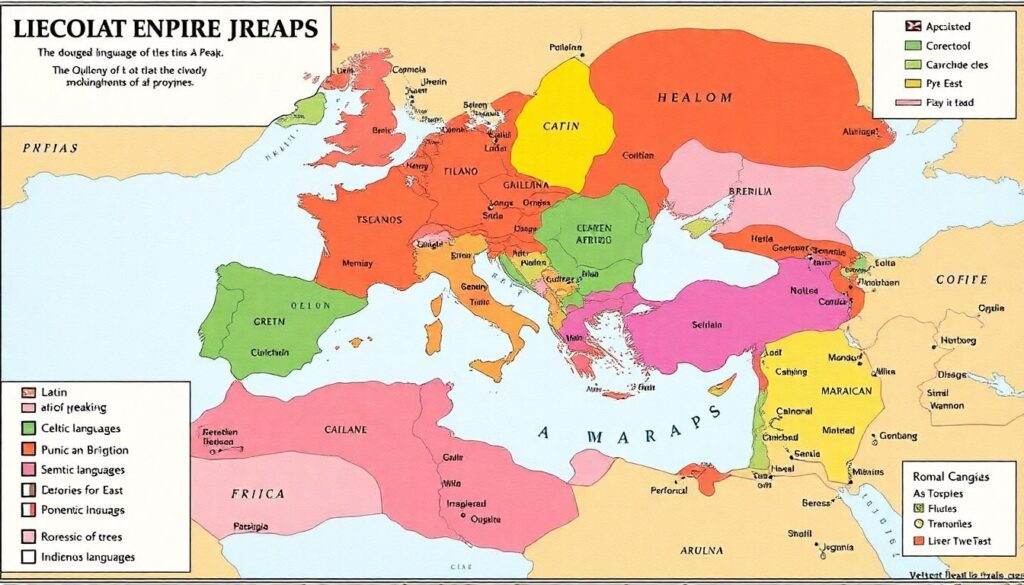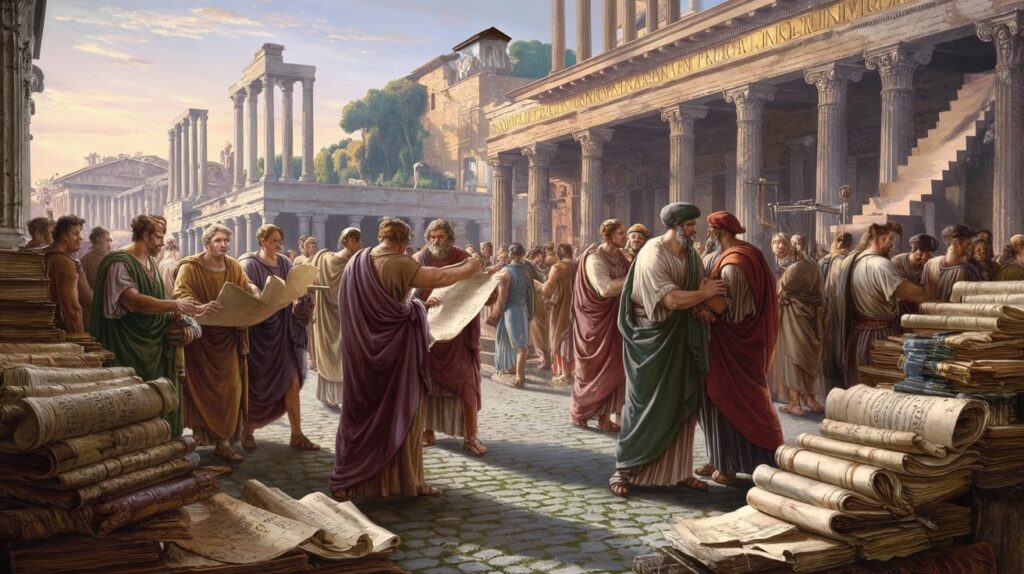The Roman Empire stretched across three continents, encompassing a vast array of peoples and cultures. This immense territory fostered extraordinary linguistic diversity, far beyond the well-known Latin and Greek languages. Many forgotten languages once thrived in Rome’s provinces, shaping local identities and daily life.
Studying these forgotten languages reveals essential insights into the empire’s history and culture. They offer clues about social interactions, administrative practices, and cultural exchanges within one of history’s most influential civilizations.
This article explores:
- The rich linguistic tapestry across Rome’s provinces
- Roman attitudes toward multilingualism
- The impact of Romanization on local tongues
- How provincial languages evolved into medieval vernaculars
- The role of language in reflecting cultural identities
Understanding these dimensions deepens your appreciation of the Roman Empire’s linguistic diversity and its lasting legacy. For instance, the military conquests led by figures like Scipio Africanus, who played a crucial role in establishing Rome’s dominance over Carthage during the Second Punic War, significantly influenced the spread of Latin and other languages.
Furthermore, the empire’s extensive legal system, exemplified by the Corpus Juris Civilis, has left an enduring impact on modern law, showcasing the influence of Roman language and thought on contemporary society. Additionally, the rise of Stoicism in Rome illustrates how Greek philosophy shaped Roman thought, further enriching the empire’s linguistic and cultural diversity.

The Linguistic Tapestry of Rome’s Provinces
The Roman Empire was home to a rich mosaic of languages, reflecting its vast territorial reach and diverse populations. While Latin and Greek were the most prominent, many regional tongues thrived within the empire’s borders.
Latin: The Administrative Backbone
Latin originated in the city of Rome and became the empire’s official administrative language. Its role extended beyond governance and law into military command and public inscriptions. Latin’s influence spread especially in the Western provinces, shaping local dialects and eventually evolving into the various Romance languages we know today.
- Latin served as a unifying tool for communication across different regions.
- Local dialects often absorbed Latin vocabulary and grammar, creating hybrid forms.
- Urban centers usually had a stronger Latin presence compared to rural areas where indigenous languages persisted longer.
Greek: The Language of the Eastern Mediterranean
Greek held a unique status in the Eastern Mediterranean provinces. This was largely due to centuries of Hellenistic influence before Roman conquest. Greek remained vital for cultural, commercial, and administrative purposes in places like Greece, Asia Minor, Egypt, and parts of the Levant.
- It functioned as a lingua franca among educated elites and merchants.
- Many official documents in the East were written in Greek rather than Latin.
- Greek literature, philosophy, and science continued to flourish under Roman rule.
Diversity Beyond Latin and Greek
Numerous other languages existed across Rome’s provinces, illustrating complex social fabrics:
- Celtic languages: Spoken primarily in Gaul (modern France), Britain, and parts of Central Europe. These languages varied significantly between regions but shared common roots.
- Italic languages: Before Latin’s dominance, several Italic languages like Oscan and Umbrian were prevalent on the Italian peninsula. Some survived alongside Latin for centuries.
- Punic: The language of Carthage in North Africa remained important even after its defeat by Rome. Punic persisted among local populations well into late antiquity.
- Aramaic and Semitic languages: Widely spoken in Syria, Judea, Mesopotamia, and other Near Eastern territories. Aramaic functioned as a common language among diverse ethnic groups.
- Indigenous languages: Various native tongues thrived in provinces such as Dacia (modern Romania) and Thrace (in the Balkans), often with limited written records but significant oral traditions.
This linguistic plurality reveals how Roman imperial power coexisted with vibrant local identities. The coexistence of dominant imperial languages with regional ones shaped everyday life—from marketplaces to religious practices—and influenced cultural exchanges throughout the empire.
For those interested in diving deeper into this fascinating world of Ancient Rome, including its rich history from its origins as a Republic to its transformation into a mighty Empire, resources such as Men of Pompeii provide engaging content that brings the past to life. Furthermore, understanding the legacy of Ancient Rome can shed light on how it shaped Western civilization.

Roman Attitudes Towards Multilingualism
The Roman Empire had a practical approach to dealing with the many languages spoken in its vast territories. They used Latin as the main language for administration but also allowed local languages to exist for different reasons. Here’s a closer look at how the Romans viewed multilingualism:
Managing Linguistic Diversity
The Romans understood that there were multiple languages being spoken in their provinces, so they made an effort to acknowledge and accommodate this diversity. This shows that the empire recognized cultural differences and knew it was important to communicate effectively with all its people.
Pragmatic Language Policies
To make sure everyone could understand each other, the Romans put in place practical language policies. Latin was used as the common language for governing, but in certain situations, local languages were still accepted and even preserved. This inclusive approach allowed both Latin and regional languages to coexist, creating a rich linguistic environment within the empire.
By studying how Rome dealt with multilingualism and implemented language policies, we can gain a better understanding of the empire’s complex social dynamics and its acceptance of cultural diversity. It’s important to recognize not only dominant languages like Latin and Greek but also the lesser-known provincial tongues that shaped everyday interactions and cultural identities within the Roman Empire.
The structure of power in ancient Rome also played a significant role in managing this multilingualism. The political framework established during the Roman Republic laid the foundation for effective governance, which included accommodating linguistic diversity.
Moreover, the religious practices of ancient Rome were intertwined with every aspect of their lives, including language use. Religion served as a cornerstone of Roman identity, influencing politics, culture, and social structures.
The legal status of women in ancient Rome also reflects how language played a role in gender dynamics. The intricate legal framework surrounding Roman women highlighted how their citizenship was intrinsically linked to their relationships with men, such as fathers or husbands.
Furthermore, Roman roads, known for their engineering excellence, facilitated not only trade and military movement but also cultural exchange and linguistic integration across different regions of the empire. These roads were essential in maintaining and expanding the empire’s reach.
Understanding Roman attitudes towards multilingualism requires looking at various factors such as governance structure, religious practices, legal status of individuals, and infrastructural development which all contributed to shaping the linguistic landscape of ancient Rome.

The Impact of Romanization on Language Evolution
The process of Romanization had a profound impact on the evolution of regional languages within the vast territories of the Roman Empire. Here are some key points to consider:
1. How Romanization Affected Regional Languages
- Romanization, characterized by the spread of Roman culture and Latin language, led to significant changes in linguistic landscapes.
- Local languages faced challenges as Latin became prevalent in administrative, legal, and urban contexts.
- Contact with Latin-speaking officials and settlers influenced vocabulary, grammar, and pronunciation in provincial tongues.
2. Decline and Evolution of Provincial Languages
- Urban centers served as hubs for cultural exchange and linguistic assimilation.
- Provincial languages gradually declined as Latin became more dominant in official and public spheres.
- The prestige associated with speaking Latin contributed to the marginalization of local dialects over time.
The interaction between Latin and provincial languages shaped the linguistic diversity of Rome’s provinces, highlighting the complex interplay between central authority and local identities. This evolution underscores the dynamic nature of language within the empire and its enduring legacy on modern linguistic landscapes.
This period also witnessed significant social changes, such as the rise of gladiators, who became both heroes and victims within Roman entertainment. Furthermore, it marked a pivotal transition in governance with the birth of the Roman Republic, which significantly influenced modern political structures.
From Provincial Languages to Medieval Vernaculars: A Linguistic Journey Through Time
The late antiquity period marks a crucial phase in the linguistic evolution of the Roman Empire’s provinces. During this era, many provincial languages did not simply vanish under the dominance of Latin; instead, they interacted dynamically with Latin and other regional tongues, paving the way for the formation of medieval vernaculars.
Vulgar Latin, the colloquial form spoken by common people across the Western provinces, became the foundation for several Romance languages. Unlike Classical Latin, which remained largely a written and formal language, Vulgar Latin reflected everyday speech patterns that varied regionally. This variation led to distinct linguistic paths:
- Italian evolved directly from Vulgar Latin in the Italian peninsula. Its development was influenced by local Italic dialects and later by interactions with Germanic tribes during migrations.
- French emerged through Gallo-Roman dialects spoken in Gaul, absorbing Celtic and Frankish elements along the way.
- Spanish and Portuguese originated from Ibero-Romance dialects, shaped by indigenous Iberian languages and later Arabic influences following Islamic conquests.
Other provincial languages left imprints on emerging vernaculars or persisted longer in specific regions:
- In parts of Gaul and Britain, Celtic languages continued to influence place names and vocabulary even as Latin spread.
- The Eastern Mediterranean saw Greek maintain cultural prominence but slowly absorbed local Semitic influences during late antiquity.
Linguistic transformation during this period often reflected broader social changes — shifts in power structures, migrations, and religious transformations all played roles. The survival of regional speech forms alongside Latin helped form new identities as medieval Europe took shape.
Interestingly, these linguistic transitions were paralleled by significant developments in other areas such as art and culture. Ancient Roman art is a testament to the ingenuity and creativity of a civilization that thrived from 753 BC to 476 AD. This period is marked by remarkable artistic expressions that were heavily influenced by earlier Greek and Etruscan traditions. These artistic endeavors are detailed in our exploration of Art and Culture in Ancient Rome, which takes you on a journey through sculpture and mosaics that still resonate today.
“The Romance languages are living monuments to Rome’s provincial past — each word echoing centuries of linguistic adaptation within a once-vast empire.”
Understanding these transitions reveals how Rome’s forgotten provincial tongues contributed directly to the modern linguistic map of Europe. It uncovers layers of history embedded in everyday speech long after imperial rule ended.

Understanding Cultural Identities Through Linguistic Diversity In The Roman Empire
Language acted as a vital marker of cultural identities within the Roman Empire, revealing much about the complex social fabric of its provinces. Each linguistic community carried unique traditions, values, and worldviews that distinguished it from others, even under the umbrella of Roman rule.
1. Local languages as identity anchors
For many provincial populations, speaking their native tongue was more than communication—it was a declaration of belonging. Celtic tribes in Gaul, for example, preserved their languages alongside Latin to maintain ties to ancestral heritage and resist complete assimilation.
2. Bilingualism and hybrid identities
In urban centers or border regions where Latin intersected with Greek or local dialects, bilingualism flourished. This often produced cultural hybridity, where individuals navigated multiple identities simultaneously—Roman citizen, regional native, and perhaps Hellenistic-influenced cosmopolitan. Such language and bilingualism not only facilitated communication but also served as a means of cultural expression and identity formation.
3. Religious and ritual significance
Language also shaped religious practices. Semitic languages like Aramaic held sacred status in certain Eastern provinces, linking worshippers to ancient spiritual traditions. Ritual language became a means of cultural preservation amidst imperial homogenization pressures.
4. Literary and oral traditions
Local languages carried rich oral histories and literary works that reinforced group cohesion. While Latin literature dominated official culture, provincial tongues thrived in storytelling, poetry, and folklore that kept communal memories alive.
5. Resistance and adaptation
Sometimes language served as subtle resistance against Roman authority. Maintaining indigenous speech allowed communities to assert autonomy culturally, even if politically subdued.
The linguistic diversity within Rome’s vast territories thus provided a mosaic of cultural identities, each shaped by language use patterns. Recognizing this interplay helps appreciate the empire not as a uniform entity but as a dynamic collection of peoples maintaining distinct voices through their tongues.
Moreover, it’s important to note that these linguistic dynamics were not isolated from other aspects of Roman life such as the legal systems, which were significantly influenced by the Twelve Tables laws. These laws marked a significant milestone in the development of Roman law and legal history.
Furthermore, daily life in Ancient Rome varied vastly for different social classes; exploring this social class divide can provide deeper insights into how language played a role in everyday interactions across these classes.
Additionally, Roman architecture, known for its masterpieces of ancient engineering, also reflected the cultural identities shaped by linguistic diversity.
Lastly, understanding Roman law is essential for grasping the foundations of contemporary laws as its principles

Conclusion
Embracing these forgotten languages is crucial for understanding the complex linguistic diversity that made up the Roman Empire. This linguistic variety provides a unique glimpse into the different cultural identities and social interactions within Rome’s provinces.
By exploring these remnants of language, we not only learn about Rome’s past but also gain a deeper appreciation for our shared humanity that goes beyond time and borders. The story of Rome, founded in 753 BC, is not just one of conquest and growth; it is also a story of innovation, culture, and governance that has left a lasting impact on the world. This journey through ancient Rome shows us how forms of entertainment like gladiators, chariot races, and theaters played a significant role in shaping social connections and political power during that time.
To fully understand the intricate social dynamics of ancient Rome, it is essential to comprehend the lives of various societal groups such as the plebeians, who represented the majority and had a major influence on political and economic systems, or the patricians, the wealthy elite distinct from working-class plebeians.

